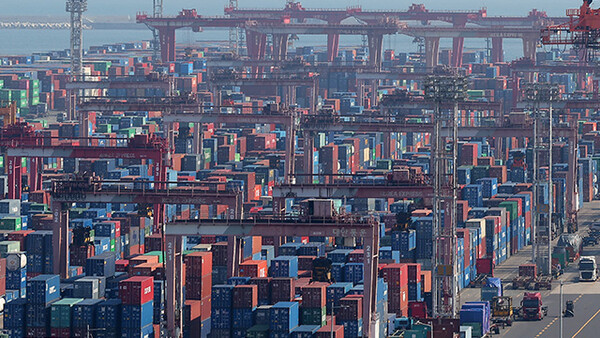Export Growth Hits a New Low
The growth momentum of exports, which have been sustaining the South Korean economy amid weak domestic demand, is visibly weakening. If the second Trump administration, which emphasizes “America First” policies and universal tariffs, takes office, South Korea’s export drive is likely to diminish further, exacerbating concerns about the economy next year.

According to the Ministry of Trade, Industry, and Energy (MOTIE) on Dec. 1, exports increased by 1.4 percent year-on-year in November to $56.35 billion (approximately 78.69 trillion won). Exports have been on a positive trajectory for 14 consecutive months since turning positive in October last year. Imports, however, fell by 2.4 percent to $50.74 billion. Consequently, the trade surplus stood at $5.6 billion, marking 18 consecutive months of surplus.
By category, semiconductors surged 30.8 percent year-on-year to $12.5 billion, achieving a record high for November. Other strong performers included computers, which jumped 122.3 percent, ships at 70.8 percent, and bio-health products at 19.6 percent. Regionally, exports increased to the European Union, ASEAN countries, Central and South America, the Middle East, and the Commonwealth of Independent States, while exports to the United States dropped by 5.1 percent, to India by 4.1 percent, and to China by 0.6 percent.
The concern lies in recent trends. Monthly export growth hit a peak of 13.5 percent in July but has since declined for four consecutive months, falling to 10.9 percent in August, 7.1 percent in September, 4.6 percent in October, and now to 1 percent in November. Average daily export growth has also been on a downward trajectory. While daily export growth was 8.9 percent in the first quarter, 10.9 percent in the second quarter, and 10.4 percent in the third quarter, it turned negative at -0.2 percent in October and reached just 3.6 percent growth in November.
Another alarming aspect is that exports of 10 out of South Korea’s 15 main export items decreased last month. Petroleum products dropped 18.7 percent, and petrochemicals fell by 5.6 percent, primarily due to falling oil prices, which also dragged down export unit prices. Particularly concerning is the 13.6 percent year-on-year drop in automobile exports, which amounted to $5.6 billion. The MOTIE explained, “Strikes at major auto parts manufacturers and disruptions in parts supply chains have reduced automobile production, while adverse weather conditions delayed the shipment of export vehicles.”
To make matters worse, despite the decline in exports to the U.S. last month, South Korea’s cumulative trade surplus with the U.S. from January to November reached $49.28 billion, surpassing last year’s record-high $44.4 billion. The government stated it plans to increase imports from the U.S. as a countermeasure, but concerns remain that the growing trade surplus could make South Korea a primary target of the Trump administration's trade policies.









Comments